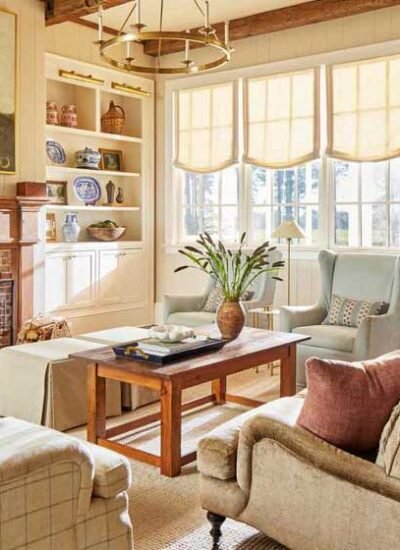If you’re lucky enough to live in an older home, you’ve already got a canvas full of character and charm. But while established features can add an undeniable sense of history, the challenge lies in making the space feel fresh and in tune with modern living.
Many homeowners shy away from updating old spaces, fearing that it might strip them of their authenticity. The key is to honour the past and introduce thoughtful changes that enhance the home’s functionality and comfort, without compromising its essence.
Respecting the heritage
Researching the era the property was built in or any architectural movements it was part of will help you gain a deeper understanding of its style and construction. This knowledge can guide you in making decisions that respect the home’s roots, while allowing for modern updates.
For example, if your home has Victorian features, the key might lie in selecting modern furnishings that echo the ornate detailing typical of the period. Alternatively, if your property is a 1970s build, you could use retro-inspired pieces that respect its original design but feel contemporary.
Cleverly integrating modern amenities
Modern bathrooms, kitchens and heating systems are essential for comfortable living, but they don’t have to clash with traditional aesthetics. For instance, you can replace outdated radiators with sleek, low-profile models that provide better efficiency, blending seamlessly into the room.
When updating a kitchen, choose finishes that complement the existing features – perhaps a mix of traditional cabinetry with minimalist countertops. This way, you maintain authenticity while integrating a level of convenience that daily life demands.
Balancing old and new through interior design
Interior design offers an excellent opportunity to balance the old with the new. One striking way to achieve this is through bespoke furniture. Think custom-built bookshelves that fit snugly into alcoves or stylish freestanding pieces crafted from natural materials.
These elements reflect the past’s craftsmanship and serve the contemporary need for practical storage. Opt for clean lines and natural textures to avoid overcrowding.
A statement light fixture or a contemporary artwork can provide just the right touch of modernity without overshadowing the home’s history.
Light and space
Period properties often have smaller windows that limit light flow. You don’t need to rip out the original frames to modernise the space. Instead, consider adding reflective surfaces or strategic lighting to brighten up darker corners.
Mirrors are great at bouncing light around a room, making it feel larger and more open. Similarly, if the property has high ceilings, drawing attention to them through clever light placement or light-coloured paint can make everything feel more expansive.
Sustainable modernisation
Modernising doesn’t mean ignoring sustainability. In fact, you can bring your home into the future while respecting its past by using eco-friendly materials and energy-efficient technologies.
Insulating old windows or fitting draught-proofing can make your home more energy-efficient without replacing original features. Look into sustainable materials for flooring or kitchen fittings that respect the building’s age and contribute to a greener environment.





Leave a Reply